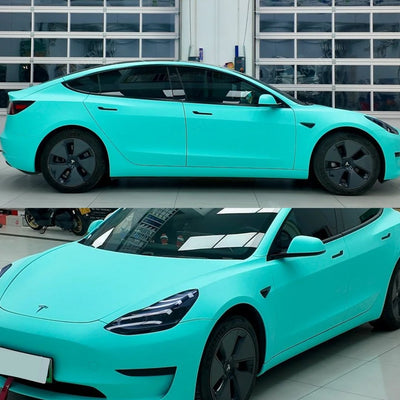
Introduction
Vinyl wrap is not only applied to cars but is also growing in popularity among bikers willing to customize their bicycles or frame or give an old bike a new look. Whether you have a mountain bike, road bike, BMX or an e-bike a bicycle vinyl wrap is a low-cost solution to provide an upgrade of the style without having to repaint the whole bike.
However, most riders would want to understand the same question before leaping into a new design or color; How much does it cost to vinyl wrap a bicycle? Depending on wrap type, intricacy of design, shape of bike frame, and professional wrap installation or local wrap shop shopping the price will be different.Knowing these cost factors will make you not get stuck by surprise when making a decision that best fits your budget.
This guide divides the average bicycle wrap costs, what affects the cost and how much of the vinyl you will require and what you can expect upon getting your bicycle covered. So, in case you are thinking of changing your bike to a smooth new look, then you are at the right place.
Estimated Bike Wrapping Cost Range
Professional wrapping of your bicycle is an excellent method to add a personal touch to the appearance of your bicycle and also covers the frame and the price will vary depending on your design, choice of material and local labor expenses.
The average professional bicycle vinyl wrapping prices are between $100 and $500.
- To have a simple single-color wrap, you should spend approximately 100-200 dollars which usually comes with professional installation as well as standard vinyl film.
- To obtain custom graphics, a more detailed color fades or detailed patterns the cost can be between 300 and 500 and above depending on the complexity of the design and also depending on the experience held by the shop.
- The cost can also be different depending on the area to install (installers in big cities usually charge more), the quality of the material (cast or PET-backed vinyl is more expensive, but also long-lasting), and the type of finish (matte, gloss, metallic, or printed designs).
You should always go to a licensed wrap shop and get a proper quote as they are able to examine the surface of your bike and advise you on the type of film to use as well as get a smooth and durable finish.
Factors Influencing the Cost of Vinyl Wrapping a Bicycle
Bicycle Size Matters
The size of your bike is the determining factor that governs the overall price. The larger the bike, or one that is an odd shape, may require more vinyl and labor costs, hence hiking the overall price.
Vinyl Quality Matters
The quality of vinyl wraps exists on numerous levels of quality rate. High-quality vinyl stands distinct from common types because it lasts longer under ultraviolet light but it comes with a cost above standard vinyl types. The lifespan of a vinyl wrap depends on the vinyl quality which you choose.
Complexity of Design
Multiple colors in addition to complex designs or customized graphics will typically elevate the total price. Single-color wraps exist at the low end of the pricing spectrum yet elaborated patterns and custom graphic designs require more installation time plus additional design hours.
Professional Installation
Some people with experience prefer wrapping their bicycles themselves, but it requires professional installation in order for the job to be perfectly done. These installers will most likely charge, hence increasing the overall cost.
Location and Shop Rates
The cost of vinyl wrapping will vary based on location and shop rates. The shop rates are usually higher in urban areas where the cost of living is somewhat higher compared to other locations.
What Is Vinyl Wrapping for Bicycles?
Vinyl wrapping is quite an easy process where a thin vinyl wrap is applied directly onto your bicycle's frame or components and wheels. These come in various types, metallic, glossy, stain chrome, tailor-made, so as to provide appropriate compliance with your bike's exact specification and give limitless colors and designs.
These vinyl wraps would undoubtedly fit any single-speed road bike perfectly. It is easy to install this kit for a person with the instructions that are so easy to understand and some simple basic tools required. These are some great added products on your bicycle for making it more custom. They give you a nice matte finish and a clear laminate applied over them for protection.
Probably, the most impressive thing regarding a vinyl bicycle wrap is that it is quite versatile. You can design your bicycle just as you envision it. It will be extremely easy to make a unique and unique look for your dear bike by applying vinyl wraps on its surface.
Advantages of Bicycle Vinyl Wrap
Vinyl wrapping is a very good way to protect and style your bicycle. Here's why vinyl wrapping is becoming the trend for cyclists today:
Protection Enhanced
Owning a bike means exposing it to dirt and other elements that may damage the surface. Putting a vinyl wrap on the frames and components of your bike creates a protective barrier against these outdoor elements. This will not only protect your bike from losing its virgin look, but it will also make cleaning up after a ride very easy. A simple wipe cleans off any mud or grime off the vinyl wrap.
Incomparable Ease
Vinyl wraps make things extremely easy for those who love bicycle customizations. In case one wants to change the look of one's bike, its vinyl wraps are not a hassle at all. One does not have to pay much with the use of chemicals or pay anyone for the removal of paint manually. One can simply peel off the old vinyl wrap and then fix a new design over it to provide a new look to your bike.
Fast Customization
Bicycle vinyl wraps provide users with fast installation and removal as their main unique selling point. The installation process takes no more than a few hours while the paint remains intact untouched after the wrap service. Customers who want fresh bicycle designs will find vinyl wrapping a time-saving and financially prudent alternative instead of total bicycle paint jobs.
Eco-Friendly Choice
Vinyl material has been trusted for years and is obtainable in several colors and patterns. Since it is waterproof and does not easily fade, it would be suitable for areas that receive heavy rainfall or those that have intense sunlight throughout the year. Unlike the traditional methods of painting, which have harmful and toxic chemicals, a vinyl wrap's application does not involve such. This makes it safe for the paint and finish on your bicycle, making it an eco-friendly way.

How to Maintain and Protect Your Bicycle Vinyl Wrap?
To maintain the appearance of your bicycle vinyl wrap to be sharp, bright and durable, proper maintenance is a must. Being much easier to maintain, compared to the traditional paint, bike wraps, however, also require routine maintenance to remain in excellent condition, particularly, regarding their exposure to outdoor dirt, UV ray, and physical touch.
Begin washing your wrapped bike with small amounts of soap and water. Strong cleaners, degreasers or rough brushes should be avoided as this may destroy the surface of the vinyl or reduce its longevity. A microfiber cloth, which is soft is the best to use in removing dust, mud and road dirt without damaging the wrap.
Your bike should be kept indoors or in shady places whenever you could. A long time in direct sunlight may lead to fading with time especially bright colors such as pink, yellow and neon finishes. Riders, in the event you ride frequently it would be advisable to apply an additional measure of UV protection by applying a vinyl-safe protection spray.
Also, do not pressure-wash your bike, particularly not at short distance, the high-pressure water can also push the edges of the vinyl up and the glue can be loosened. Rather, use soft hand-cleaning. Between, you should also watch your wrap to determine lifting edges or scratches to repair them before spreading.
Using proper maintenance practices, the quality bicycle wrap can have the nice appearance that is years long and can protect the original paint beneath.
Exploring Vinyl Wrap Options for Your Bicycle
The fact that there are a very large range of finishes is one of the greatest benefits of wrapping your bicycle in vinyl. You like slick and stealthy or fancy and flashy, no matter what type of person you are, there is a vinyl style that suits you in the saddle. This is a glimpse of the popular kinds of bike wraps of all kinds, each with its distinct texture, level of shine and appearance.
Matte Vinyl Wrap
The matte vinyl wraps are clean, modern, and non-reflective and they look great on minimalist or performance oriented bikes. The flat finish conceals a lot of fingerprints and small scratches, and thus it is a good option to use by everyday riders. Matte bicycle wraps provide a nice but high-end appearance that does not look too glamorous.
Metallic Vinyl Wraps
Metallic vinyl wraps are the ideal choice in case you would want your bike to glisten when exposed to the sun. These movies have fine metallic flakes which give a depth, shine and a glossy elegant appearance to your frame. Metallic wraps are favored by road bikers and mountain bikers and they make your bicycle look very professional and high end yet they offer great protection to the frame of the bike.
Glossy Vinyl Wrap
The glossy wraps resemble a high gloss paint that has just been painted. They are bright, thought-provoking, and suited to those who ride a bike wishing to make a stylish statement. A glossy vinyl wrap does add to the color saturation and makes your bike shiny and polished, specially the bright colors such as red, pink, blue, and lime green.
Conclusion
A bike gains its best transformation through vinyl wrapping because of its ability to personalize and update appearance styles. Different sizes of your bike along with complex design and vinyl quality will affect why it costs so much. This investment serves two purposes by improving bike appearance while giving protective coverage to the finish. The process of obtaining tentative estimates about local bike experts who perform vinyl wrapping consultation can begin from this point. Deciding to spend money on a good price comes with an unknown effect on your image.
































